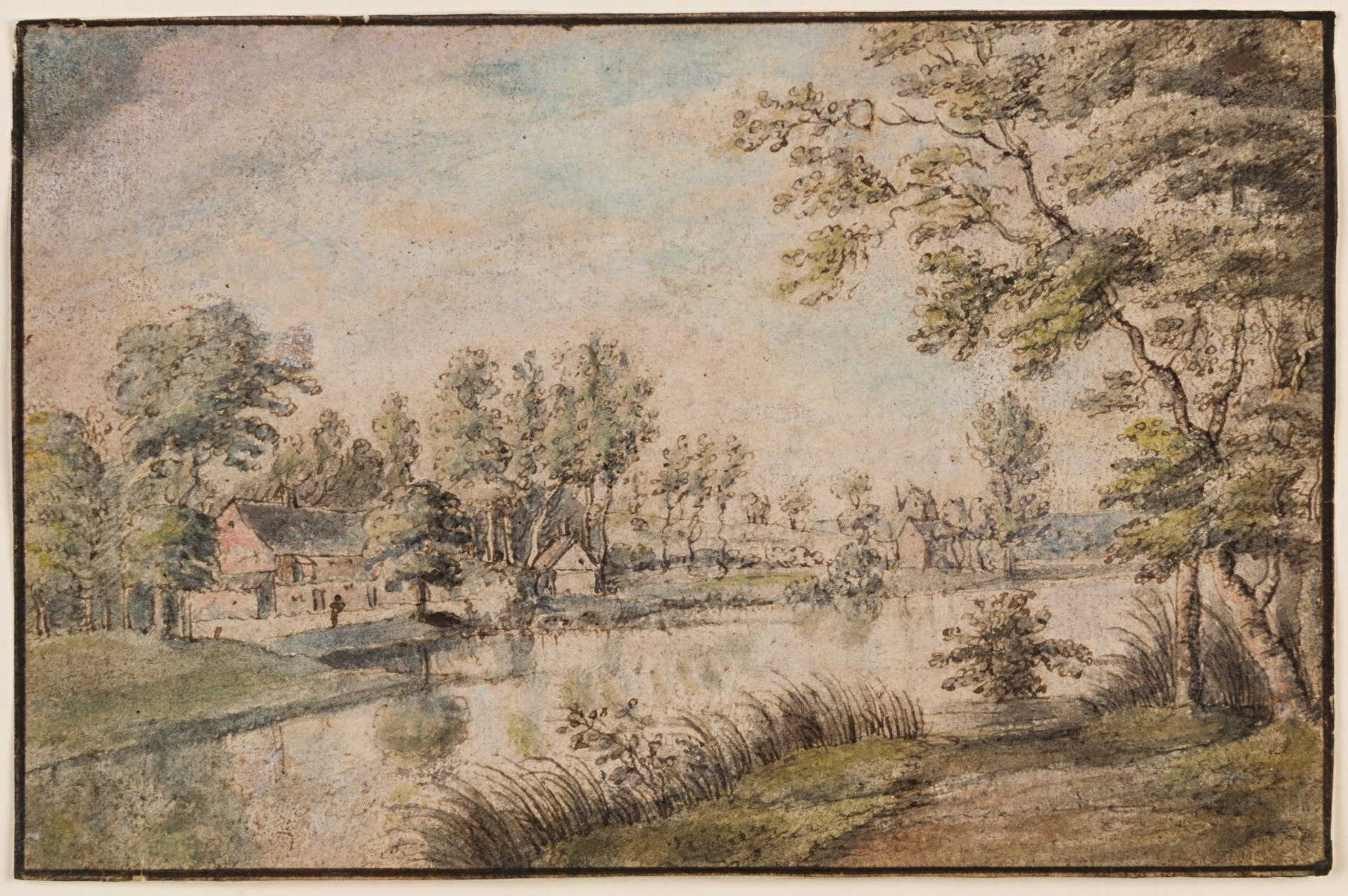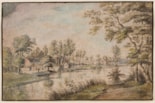Lucas VAN UDEN
(Antwerp 1595 - Antwerp 1672)
A Wooded Landscape with Houses Seen Across a River
Sold
Pen and brown ink and brown wash, with blue, green and red washes, with framing lines in brown ink.
A faint sketch of a church in black chalk on the verso, backed.
Faintly inscribed Van Uden / Antwerp 1596-1662 on the verso, backed.
98 x 149 mm. (3 7/8 x 5 7/8 in.)
A faint sketch of a church in black chalk on the verso, backed.
Faintly inscribed Van Uden / Antwerp 1596-1662 on the verso, backed.
98 x 149 mm. (3 7/8 x 5 7/8 in.)
The present sheet is a fine example of the landscape studies for which Lucas van Uden was known, and the combination of delicate pen and ink lines with touches of watercolour is a characteristic feature of the artist’s draughtsmanship. As one scholar has noted, ‘In his many water-colour drawings Van Uden often achieved a refinement and a certain tenderness that are not always present in his paintings; it is as though he could express himself better in smaller works. The drawings give a good picture of the flat Flemish country and the wooded fringes of Wallonia. Water often plays an important part in his compositions. It is questionable whether the drawings were made direct from nature; they seem rather to have been conceived as ‘finished’ studio pieces based on sketches made out of doors in chalk or with the pen.’
Almost nothing is known of the collector P. (or Gaston?) de Ramaix, whose collector’s mark of an enlaced G and R appears on the verso of the sheet. The same mark is found on a number of prints and drawings – mainly by Dutch and Flemish artists – which have appeared on the art market in recent years, as well as several prints in the Groeningemuseum in Bruges and others in the Fondation Custodia in Paris and the Kupferstichkabinett in Berlin.
Almost nothing is known of the collector P. (or Gaston?) de Ramaix, whose collector’s mark of an enlaced G and R appears on the verso of the sheet. The same mark is found on a number of prints and drawings – mainly by Dutch and Flemish artists – which have appeared on the art market in recent years, as well as several prints in the Groeningemuseum in Bruges and others in the Fondation Custodia in Paris and the Kupferstichkabinett in Berlin.
A landscape painter, draughtsman and engraver, Lucas van Uden was probably a pupil of his father Artus. Between 1615 and around 1630 he is supposed to have worked in the studio of Rubens, although this is by no means certain. That he was certainly influenced by the master is evident, however, in the numerous engravings he produced after, or inspired by, paintings by Rubens. By 1628 van Uden was registered at the guild in Antwerp, and it was there that he spent almost the whole of his career, apart from a tour along the Rhine between 1644 and 1646. As a landscape painter, van Uden was at his best working on a relatively small scale. He made a particular speciality of woodland scenes, with the staffage in his compositions usually added by other artists, notably David Teniers and Jacob Jordaens.
Van Uden’s biographer Arnold Houbraken noted that he often ‘awoke at the crack of dawn and went out to the fields and the woods’ to draw. A number of the artist’s watercolour drawings, some of which are dated in the 1640s, depict actual topographical views. Only a very few, however, can be identified as preparatory studies for landscape paintings, and most seem to have been produced as finished works of art in their own right, and intended for sale to collectors. Indeed, van Uden may have been best known in his own day for his landscape watercolours of the Flemish countryside; the portrait engraving of the artist in Van Dyck’s Iconografie depicts him holding a landscape drawing.
Provenance
P. de Ramaix (Lugt 4099), his stamp on the verso.




